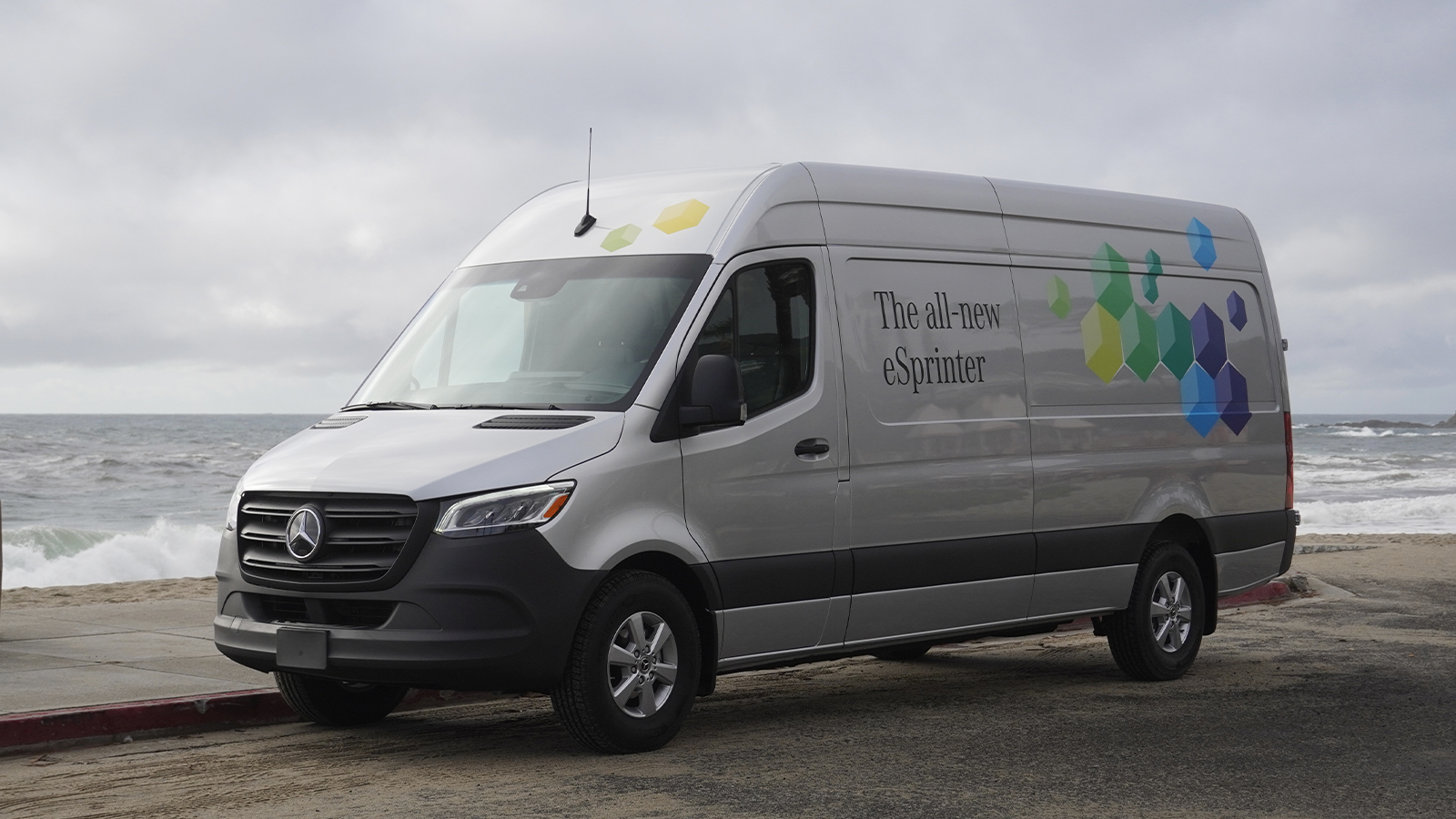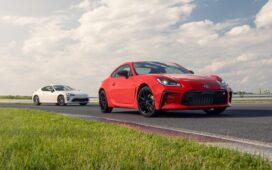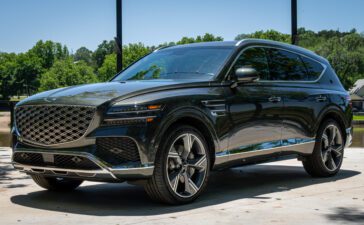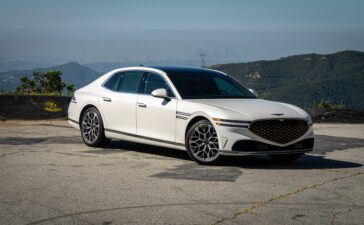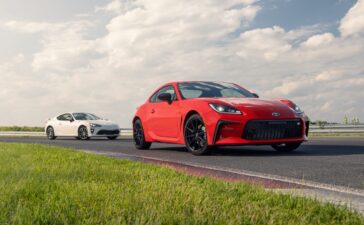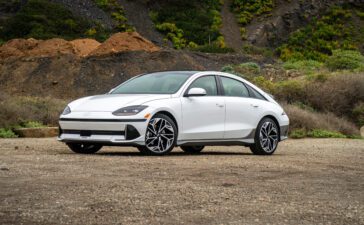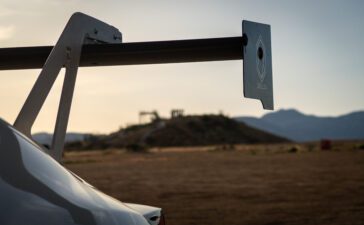Many companies, from established automakers to fresh upstarts, view the quandary of last-mile transportation as a business opportunity best solved by electric vehicles. And now, the big dog of van life has jumped into the fight: Mercedes-Benz with an electrified version of the popular Sprinter vans.
The obvious advantages of stop-start efficiency, low-speed torque, and compact drivetrain packaging make vans something of a perfect use case for electric utility. And not just to help Jeff Bezos earn another penny or two on every Amazon Prime one-day delivery, since mobile detailers, handymen, contractors running a handful of local projects, and even private buyers might view this new electric van as a solid solution. To show off the eSprinter’s capabilities and range, Mercedes-Benz recently invited select media out for a test drive around Southern California.
Skip to section:
- Specs
- Exterior
- Pricing breakdown
- Interior and tech
- Sport Utility Van?
- Electric drive modes
- Real-world range
- Conclusion
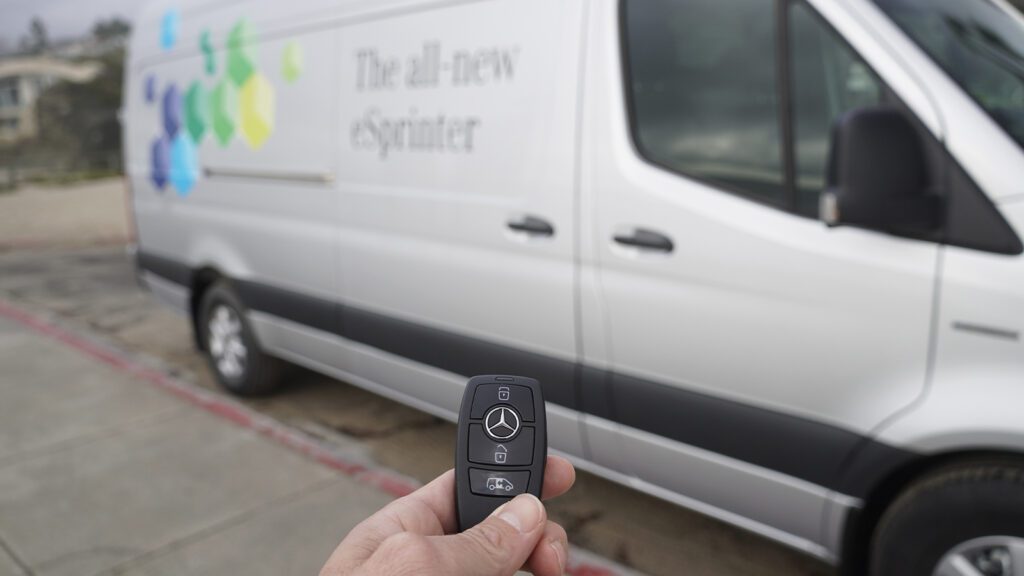
Price & specs
[Button id=”374″]
| Base price: | $71,886 (standard output) |
| As-tested price: | $75,316 (high output) |
| Motor/battery choices: | Single permanent magnet synchronous motor w/ 113 kWh lithium-iron-phosphate battery pack |
| Transmission choices: | single-speed |
| Drivetrain choices: | rear-wheel drive |
| Power: | 134 horsepower (standard), 201 horsepower (high output) |
| Torque: | 295 pound-feet (for up to 30 seconds) |
| Weight: | 6,746 lbs |
| Top speed: | 75 mph |
| 10-80% fast charge time: | 42 mins (at 115kW) |
| MPGe: | TBA |
| Range: | approx. 273 miles |
eSprinter exterior design
Other than branding on early vehicles that Mercedes-Benz brought to Newport Beach for media testing, the eSprinter flies under the radar next to ICE vans. And that’s kind of the point: avoiding any of the frill or futuristic styling that more consumer-focused EVs might prioritize to woo any early adopters unless that’s your jam like the Koreans would like to hope.
The big Benz logo on the front hides a charge port, so the eSprinter lacks a fuel filler door. But even the open grille allows airflow to support an impressive cooling management system that combines the drivetrain and climate control circuits to best maximize range and battery life cycles. Otherwise, the sliding side door, double rear doors, and high roof all create a familiar profile.
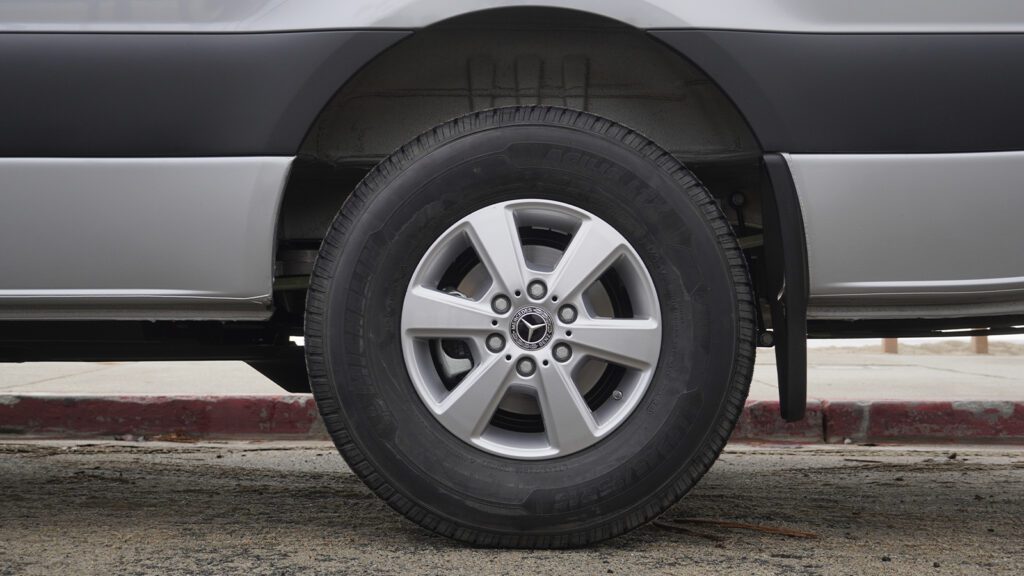
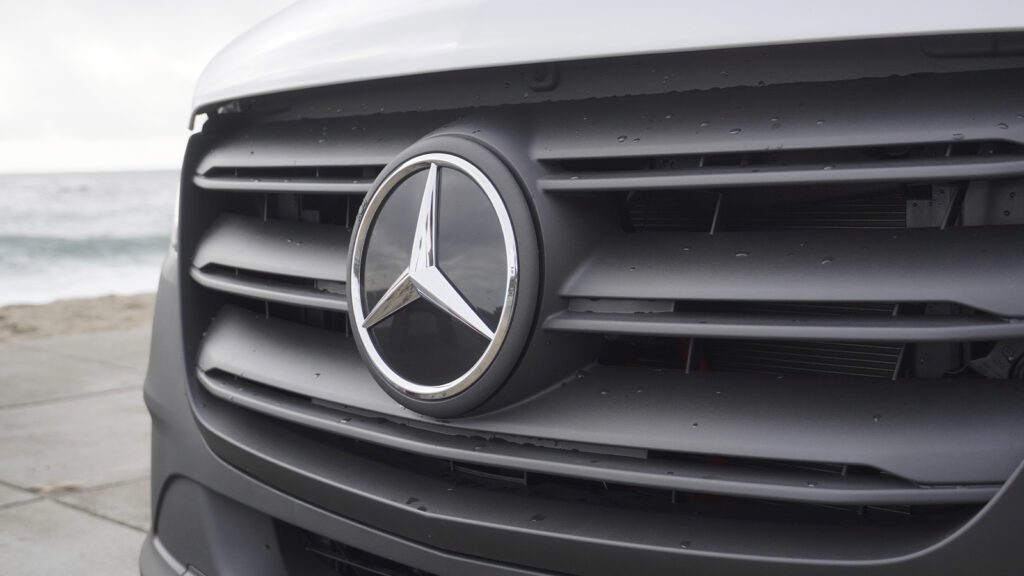
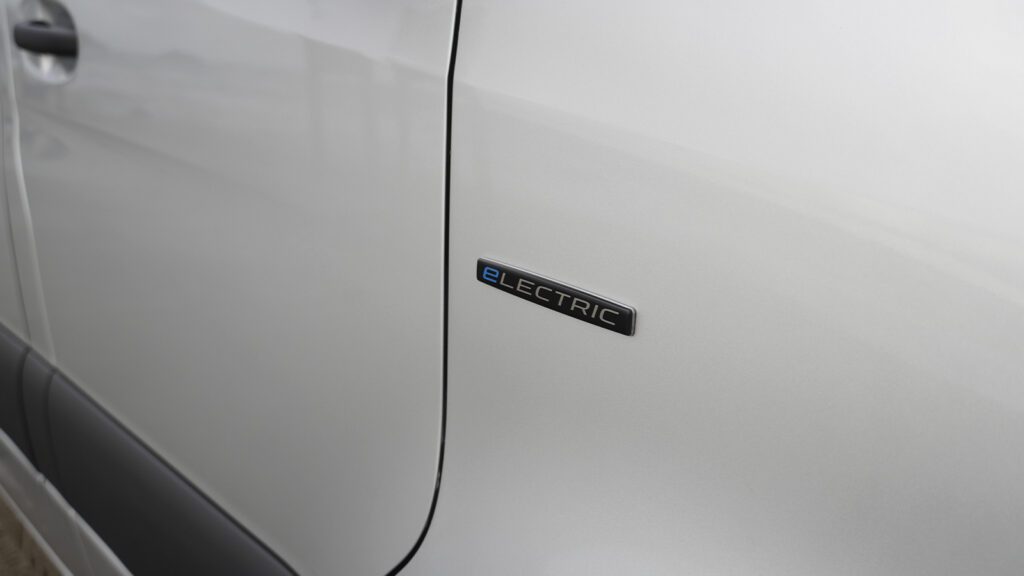
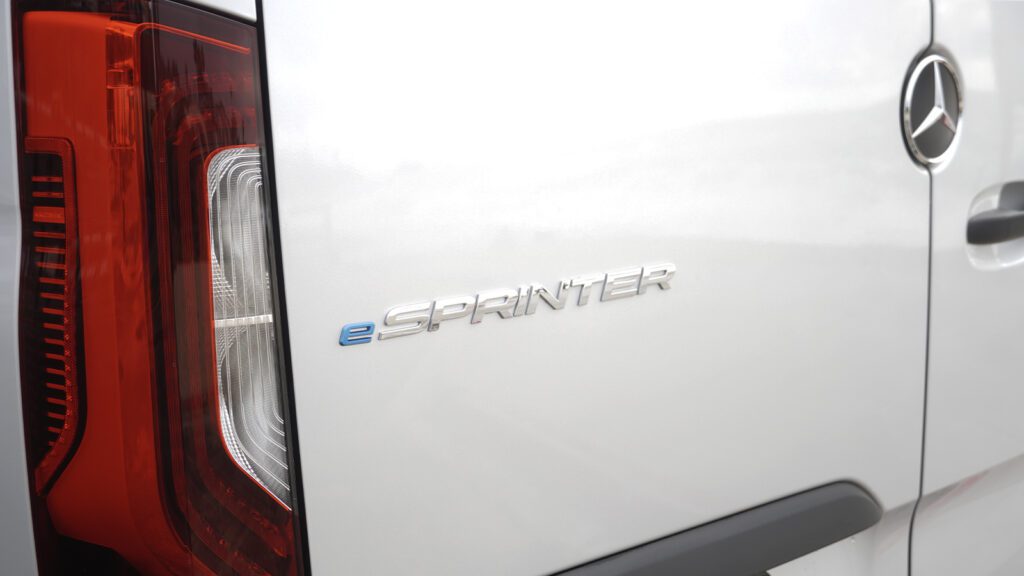

| What’s hot? | – Electric drivetrain is perfect for urban delivery or work vans – Mercedes’ expertise and engineering at work – Peppy and quick below about 50 mph – Planted handling helps make this big van eminently easy to drive – Just enough range for some freeway cruising |
eSprinter pricing breakdown
A base eSprinter starts at $71,886 with a 113-kWh battery, a 170-inch wheelbase, and a 100-kW electric motor powering the rear wheels. The battery pack and exterior dimensions remain the same across the lineup, though an optional high-output 150-kilowatt motor bumps that sticker up to $75,316.
The rest of Benz’s planned options pricing remains something of a mystery. On other vehicles, the MBUX infotainment system typically runs between $1-2,000, but keep in mind the eSprinter’s version will include specific navigation software that takes into account traffic and charging stops, even elevation topography to better estimate potential range remaining. Other eSprinter options will include the choice of dual bucket seating layouts or different access configurations for the rear cargo area.
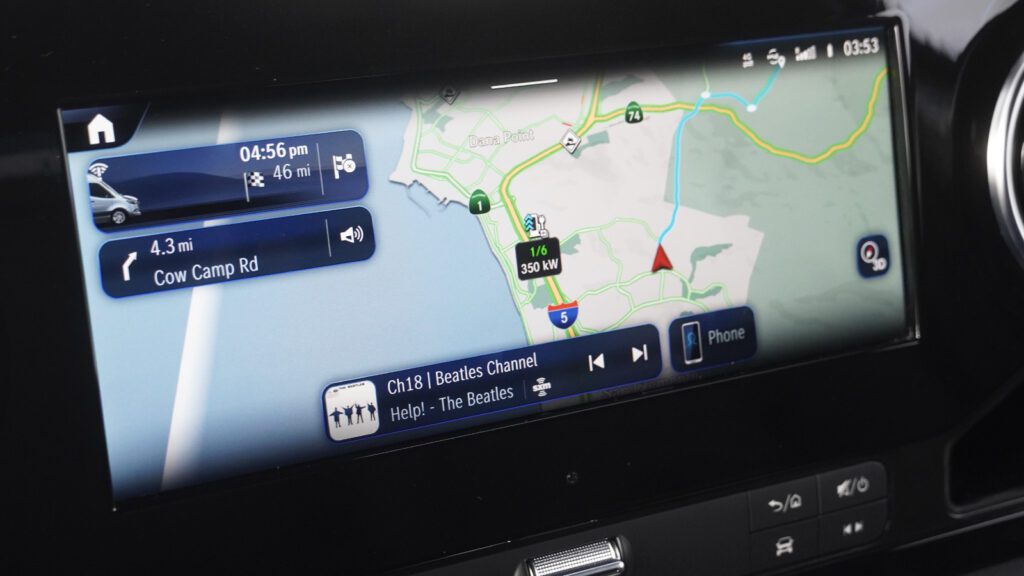
Mercedes will build the eSprinter at a plant in North Charleston, South Carolina, which may make government incentives and rebates possible for buyers in the right income bracket.
Pricing and destination, however, totals $2,295—not an insignificant number, and likely attributable to the eSprinter’s serious size.
eSprinter interior and tech
In something of a surprise, but one that also makes sense, the eSprinter’s interior can best be described as Spartan. Maybe the Benz logo suggests another rung up the luxury ladder versus Ford’s E-Transit, the eSprinter’s main competitor at this point, but the design hews more closely to the utilitarian ethos. Severely upright seats that require a choice between legroom or seat recline especially prove the point—for drivers jumping in and out constantly rather than taking long road trips, presumably, this shouldn’t be too much of a concern.
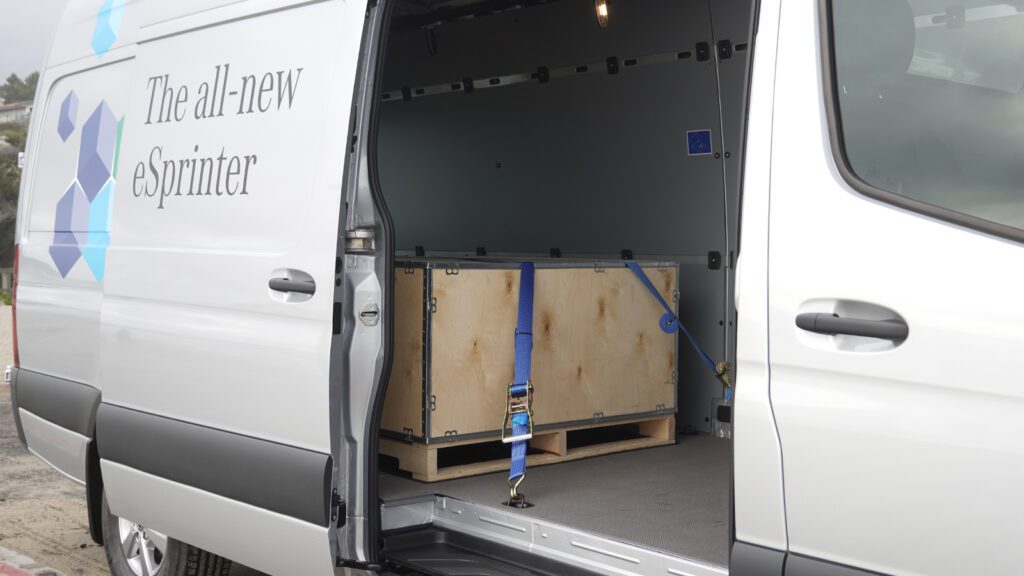
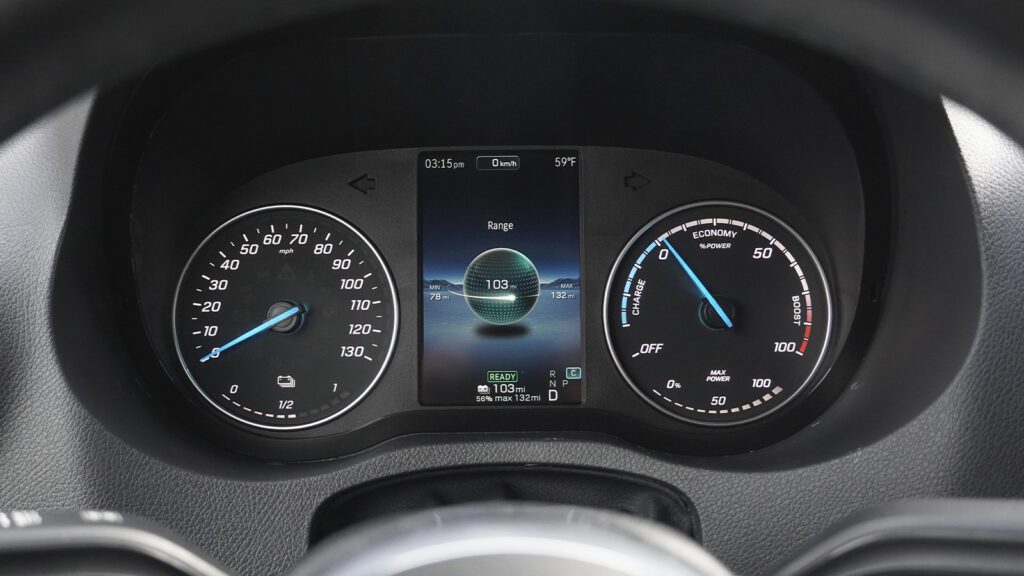


The steering wheel will look familiar to anyone who owns a Benz, but for construction workers or delivery drivers, getting used to haptic buttons will require an adjustment period. Whether the buttons can sense finger movement through work gloves also remains a mystery. Plenty of cupholders and room for central storage, at the very least, round out the compact front cabin.
In terms of tech, the optional MBUX gets those aforementioned EV-specific helpers, displaying range remaining, navigation, and drive modes in addition to the standard media screens. A perfectly serviceable, happily basic gauge cluster also provides a minimum and maximum range estimate, as well as displays for power output and regen, plus battery state of charge and speed. Using paddles on the steering wheel shifts between five different regen modes, from “D-” for the closest to one-pedal driving all the way to “D++” to allow for full coasting.
A variety of configurations for the front seats include dual buckets, a driver’s bucket, and a single passenger jumpseat with a narrow door to the rear cargo area in between, or a driver’s bucket with a double bench for two passengers—the latter requiring a solid wall blocking access to the cargo area.
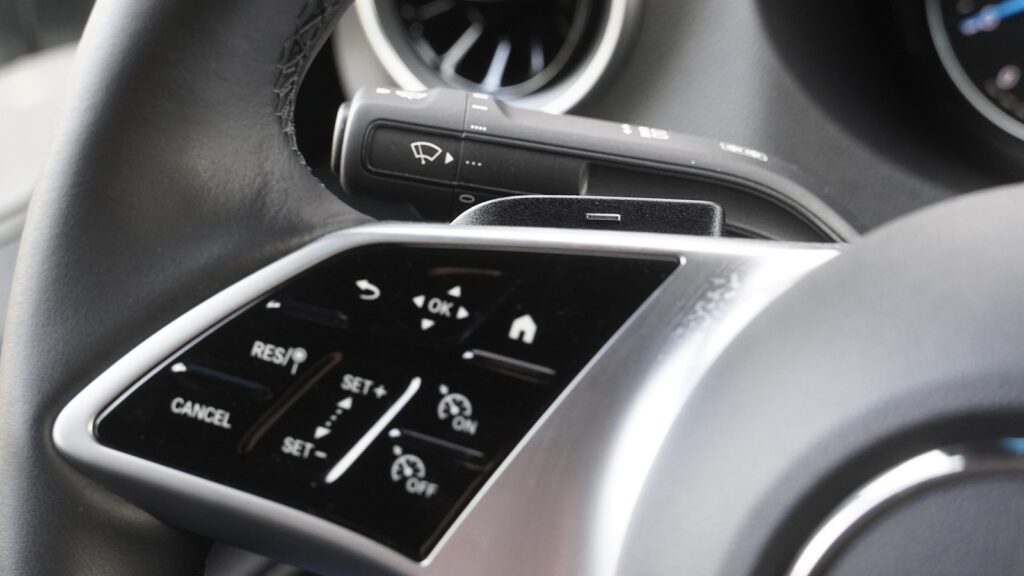
In the back, the eSprinter’s large canopy and compact electric drivetrain packaging allow for a 79.1-inch standing height at the center of the 173.6-inch-long bed. A variety of tie-downs and shelf mounting points dot the floor and walls, respectively. But in another surprise, the rear does not include any power outlets for powering tools or accessories. Benz reps on site in Newport suggested that upgrade will almost certainly arrive for later model years.
SUV: Sport Utility Van? Not quite…
For drivers accustomed to either gasoline or diesel-powered Sprinter vans, the eSprinter’s 201 horsepower and 295 lb-ft of torque might sound a bit underwhelming (and that’s the high output motor’s rating). But first things first, rest assured that the little e-motor does just fine. Low-end torque means that pulling off the line at a stoplight or stop sign requires just a bit of light toe into the go pedal (can’t call it “throttle” here). Though power dies off a bit from there, once wound up, the eSprinter accelerates most happily from about 30 to 50 miles an hour.
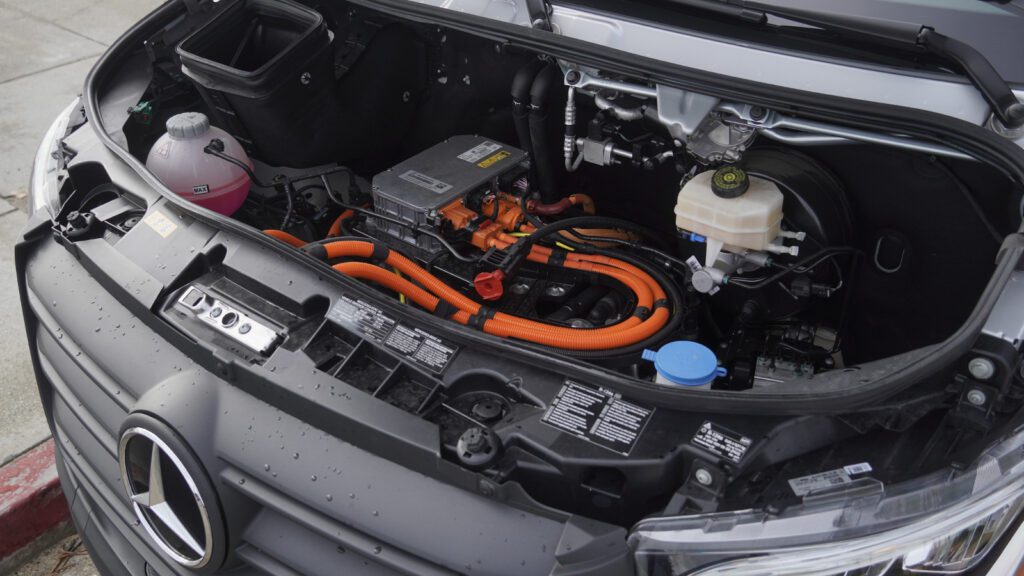

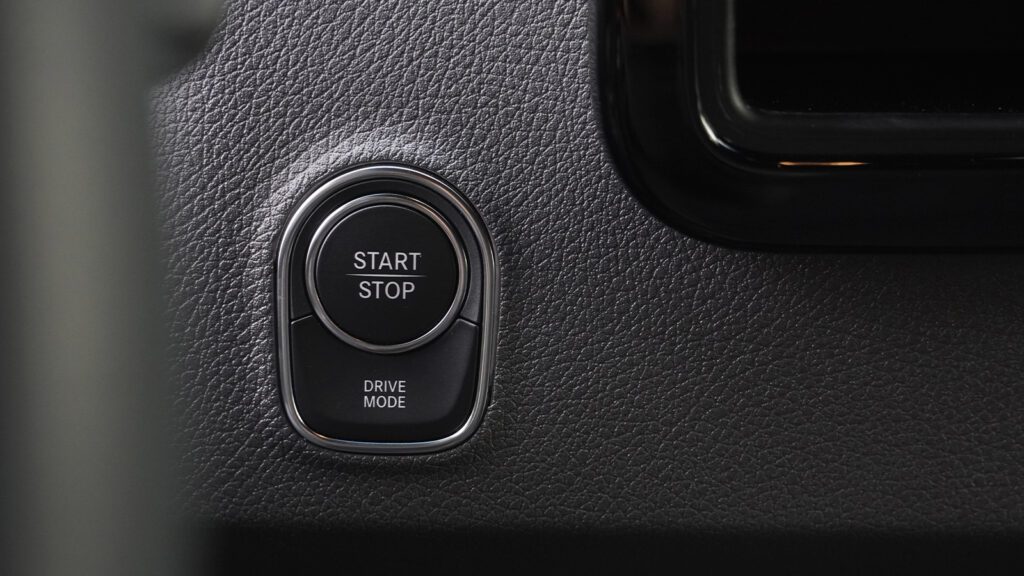
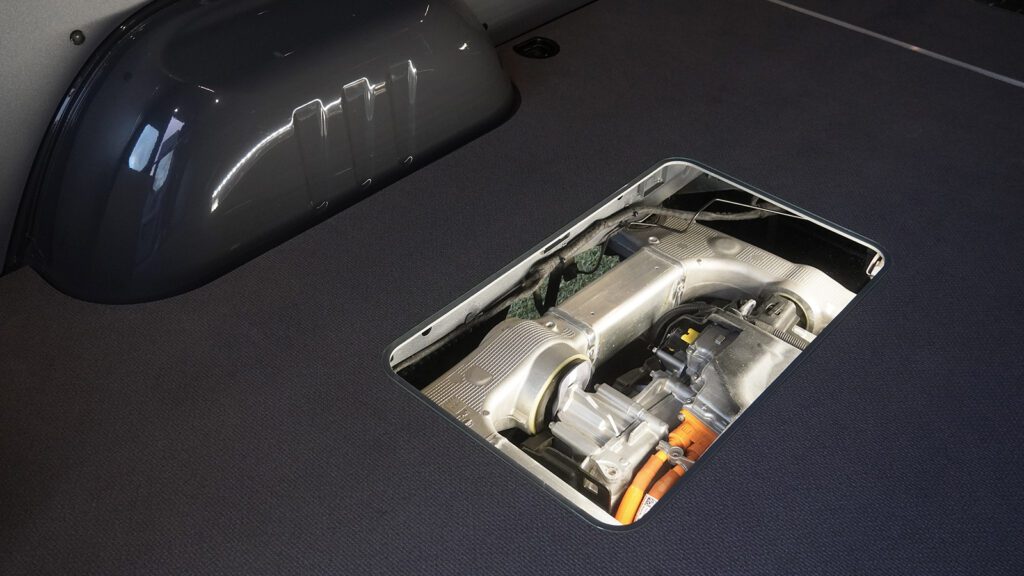
Note that Benz mounted a 440-pound box in the cargo area to allow journalists to mimic tools or packages for delivery. Meanwhile, the modular low-slung skateboard chassis (which all Benz vans will share starting in 2026) helps to prevent body roll and top lean much better than on ICE Sprinters. But that composure comes at a cost, mainly felt when harsh reverberations jolt up into the van while rolling over pitted road surfaces or speed bumps.
Still, the eSprinter is surprisingly easy to just get in and drive. At 92.3 inches wide without mirrors, the tall sidewalls squeeze through traffic without much concern for the overall 280-inch length, and the rear tires even track closely to the fronts thanks to a 170-inch wheelbase. Visibility sometimes presents a challenge, though large rearview mirrors and blind-spot monitoring help a ton.
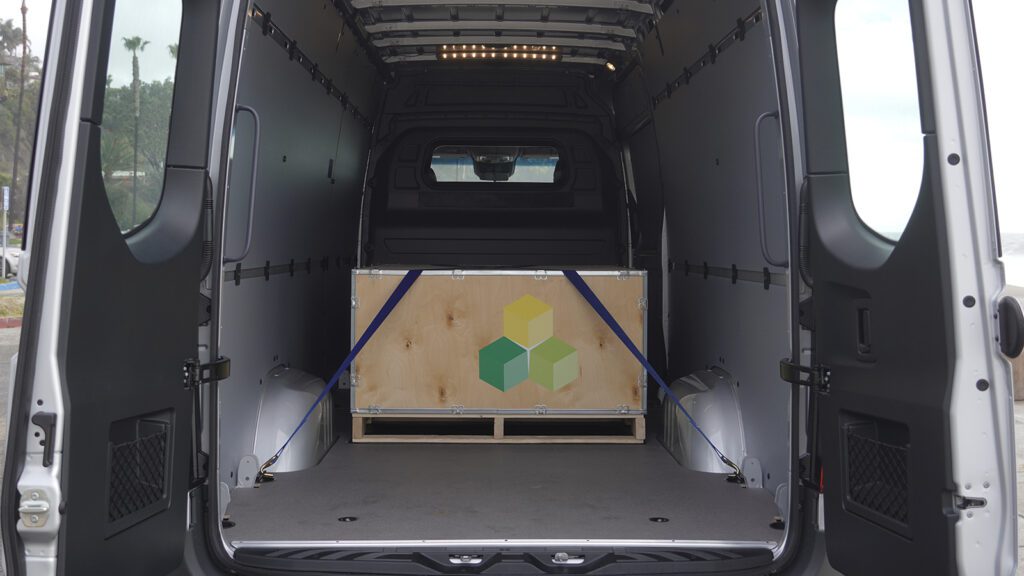
Playing around with electric drive modes
Once accustomed to the sheer size and speed of the eSprinter, fiddling with the three drive modes came next. Starting in “Comfort” allows full access to every last horsepower and pound-foot of torque, but dropping into “Eco” or “Maximum Range” cuts max output to 100 and 80 kilowatts, respectively. The difference is immediately noticeable, especially at low speeds in Maximum Range mode where full “throttle” all day becomes necessary. In reality, does that then save range versus driving as economically as possible? Sounds like a game that employers can play with employees.
In each drive mode, the “+” and “-” paddles on the steering wheel can then toggle between five regen settings. With “D++” selected, the eSprinter coasts almost more smoothly than an ICE car, with zero engine braking. Three steps down to “D-” and the van almost approaches one-pedal driving, but not quite.
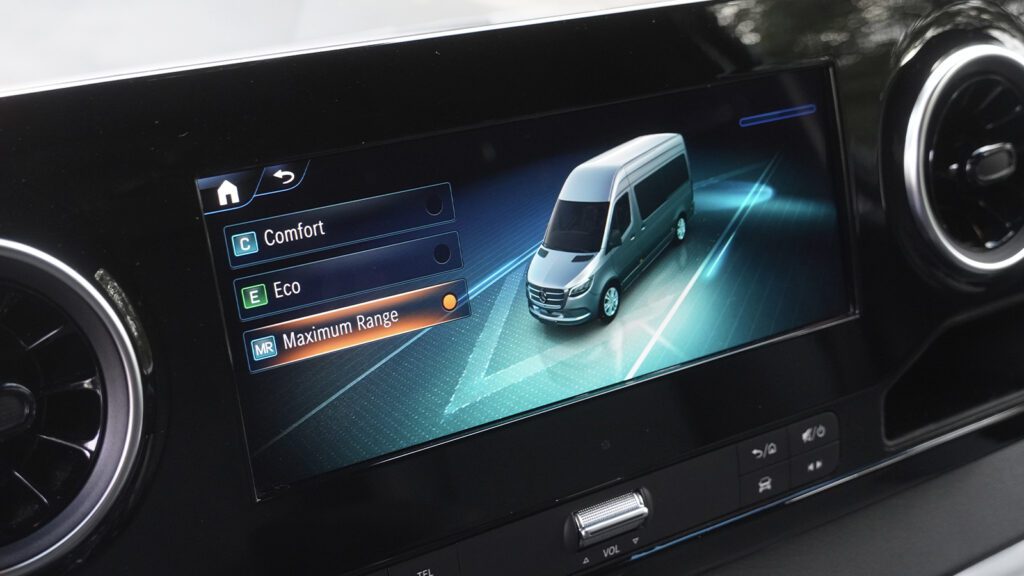
For those eagle-eyed readers keeping track of their abacuses, D- to D++ only adds up to four regen settings—correct, because holding the + paddle also activates “D-Auto,” which allows the eSprinter to adjust regen based on the scenario to maximize range. The concept sounds good, taking the onus away from flawed or distracted humans, but in execution, D-Auto requires serious attention while used in traffic because the rate of regen changes from moment to moment.
The lack of one-pedal driving, meanwhile, makes a lot more sense within the context of last-mile deliveries. After all, if a driver in one-pedal mode comes to a stop without touching the brake, they might then forget to put the eSprinter in Park before hopping out and dropping off a package. Not ideal, from both logic and liability standpoints.
In Comfort mode with full power available, the eSprinter can get up to highway speeds just as fast as average traffic. The top speed of 75 miles per hour means employees don’t have to risk incurring their employer’s wrath after getting a speeding ticket, though reaching that pace creates a fair amount of wind noise within such an upright vehicle.


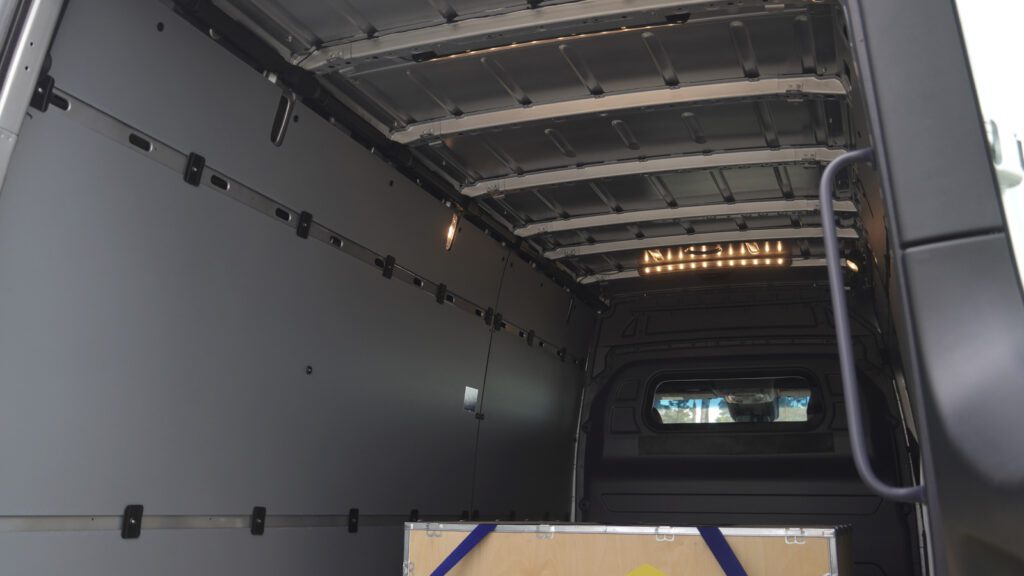

On other electric Benzes, reducing NVH clearly took far more of a priority during the development process. Not so for the eSprinter and that Spartan ethos. Even the leather seats seem fairly firm—though, in another surprise, also very well bolstered for a confirmed non-sports car. Maybe with all the climbing in and out, the seats will break in more, though the walled-off cargo area means that taller drivers definitely face a tough choice between knee room and back comfort.
Real-world range performance
Range performance clearly took a higher level of priority than M-B’s more standard silent and sumptuous interiors. And the eSprinter absolutely delivered over the course of 100-plus miles in traffic and on the highway around Newport, despite confirmed journalistic drag racing.
Part of the impressive range performance for such a large, aerodynamically inefficient van comes down to effectively managing the battery and inverter temps, so a nifty setup that combines the routing for coolant used in climate control and drivetrain components probably plays a big part in maintaining accurate range estimates.
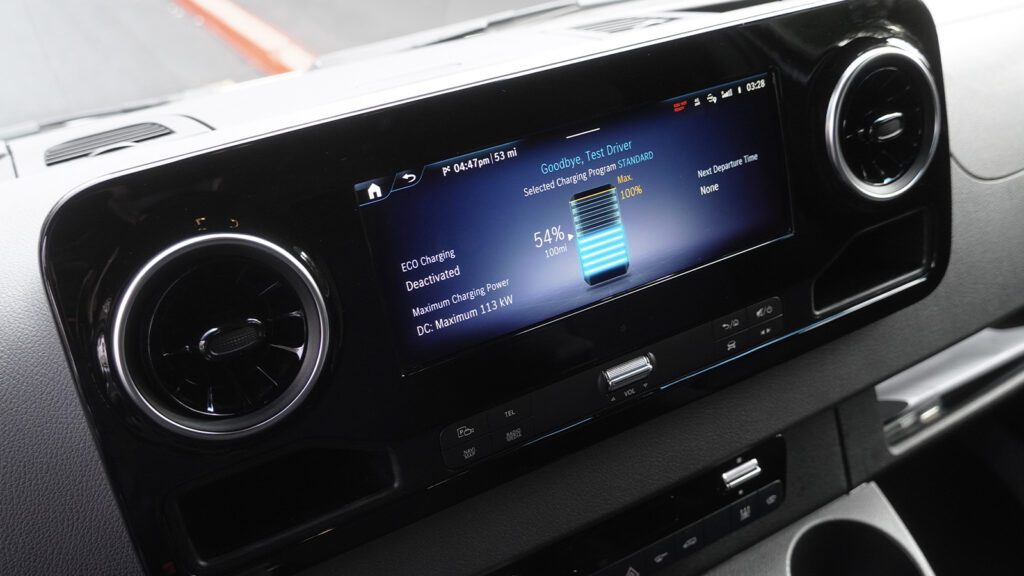
Mercedes-Benz’s research indicates that the average delivery van travels much less than 100 miles per load anyway, so the eSprinter’s claimed ability to drive from Las Vegas to Los Angeles on a single charge should do the trick just fine. But a few shortcomings do arrive due to the electric drivetrain, as well. Mostly a significantly reduced payload compared to ICE Sprinters, officially rated at 2,624 pounds or less than half of a gas or diesel van. The lower number stems from the batteries making up more of the official Gross Vehicular Weight Rating, though if the batteries actually weigh 1,007 pounds as Benz claims, the math doesn’t quite add up.
A few other practical questions arose in Newport, too, in addition to the payload and whether haptic steering wheel buttons can sense work gloves. No, Benz currently has no plans to build an all-wheel-drive dual-motor eSprinter. Outlets in the rear will almost certainly arrive later, as will a fully open cockpit and cargo layout with no wall divider behind the seats.
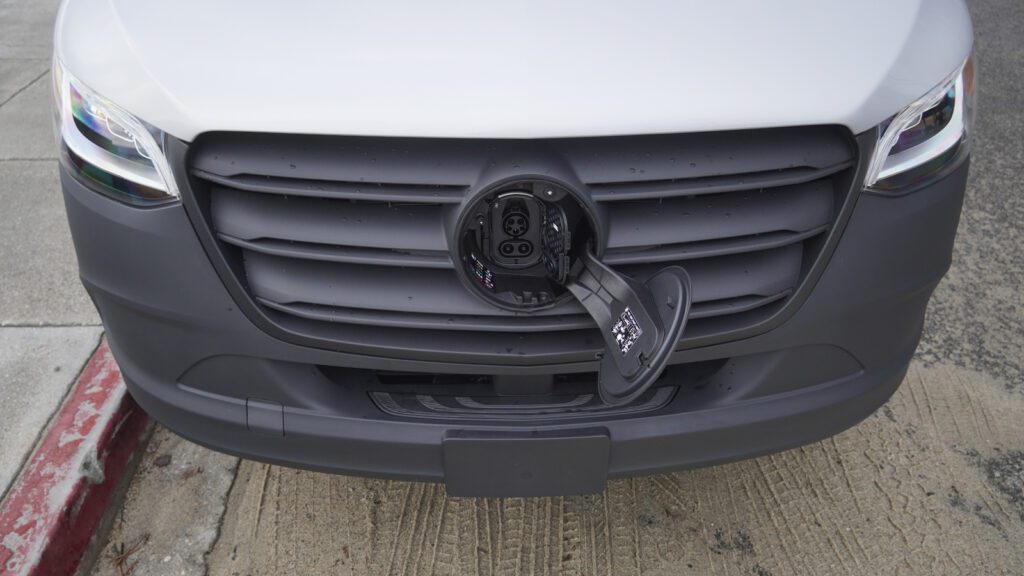
And most importantly for a company running eSprinters as delivery vans: charge times. Benz claims the eSprinter can manage a 10-80% charge in 42 minutes, which falls in line with the large battery pack. The lithium-iron phosphate battery itself also uses zero cobalt or nickel to help reduce the environmental impact of mining rare-earth minerals.
And yet, the eSprinter maxes out at only 115-kW charge speeds, so the best fast charging stations will need to throttle back. That’s a bummer because two drivers working together can probably pack in another load of boxes and reach the max payload faster than the van can top up on electrons. Presumably, the guesstimated drive routes under 100 miles for each delivery run fit into this equation, as well.
| What’s not? | – Not particularly comfortable seats – Needs 120-volt outlet(s) capacity in the cargo area – No all-wheel-drive version in the works – No wide open layout so far |
Built to satisfy very specific use cases
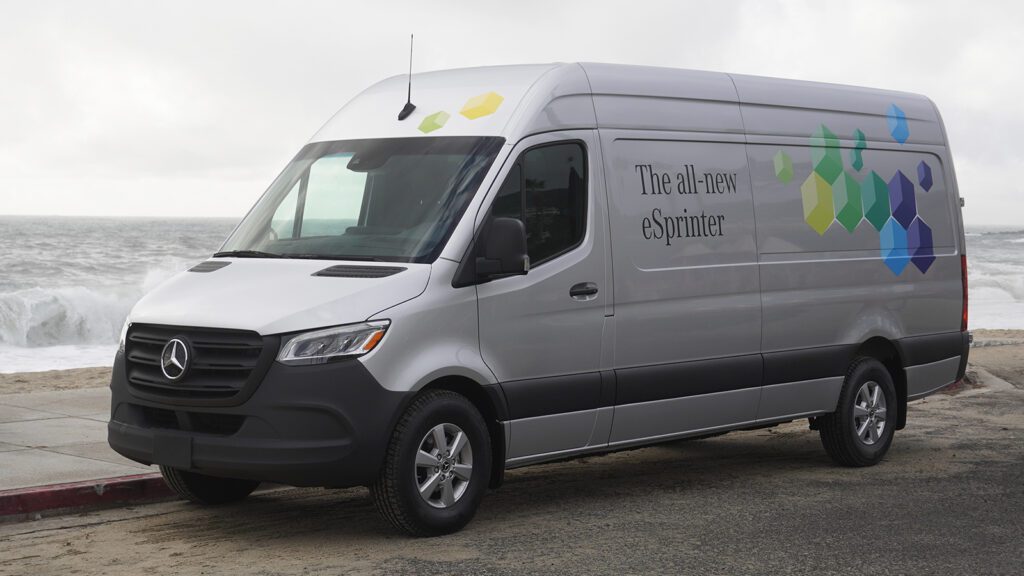
[Button id=”373″]
In many ways, the eSprinter seems catered to very precise use cases rather than satisfying the full gamut of the van market, from utilitarian delivery spec to uber-expensive overlander platform. But the electric drivetrain kind of cancels out camping or overlanding as a market segment, anyway.
Without a doubt, the few production-line vans in Newport showed all the quality expected from Mercedes-Benz, and pricing seems just about right for the commercial buyer. More refinement, increased range, and more configurations will almost certainly arrive in years to come. But for now, Benz clearly waited this long to make their first step into the electric van game a strong one.

